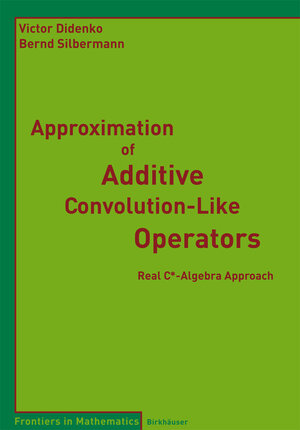Approximation of Additive Convolution-Like Operators
Real C*-Algebra Approach
von Victor Didenko und Bernd SilbermannVarious aspects of numerical analysis for equations arising in boundary integral equation methods have been the subject of several books published in the last 15 years [95, 102, 183, 196, 198]. Prominent examples include various classes of o- dimensional singular integral equations or equations related to single and double layer potentials. Usually, a mathematically rigorous foundation and error analysis for the approximate solution of such equations is by no means an easy task. One reason is the fact that boundary integral operators generally are neither integral operatorsof the formidentity plus compact operatornor identity plus an operator with a small norm. Consequently, existing standard theories for the numerical analysis of Fredholm integral equations of the second kind are not applicable. In the last 15 years it became clear that the Banach algebra technique is a powerful tool to analyze the stability problem for relevant approximation methods [102, 103, 183, 189]. The starting point for this approach is the observation that the ? stability problem is an invertibility problem in a certain BanachorC -algebra. As a rule, this algebra is very complicated – and one has to ? nd relevant subalgebras to use such tools as local principles and representation theory. However, invariousapplicationsthereoftenarisecontinuousoperatorsacting on complex Banach spaces that are not linear but only additive – i. e. , A(x+y)= Ax+Ay for all x, y from a given Banach space. It is easily seen that additive operators 1 are R-linear provided they are continuous.







